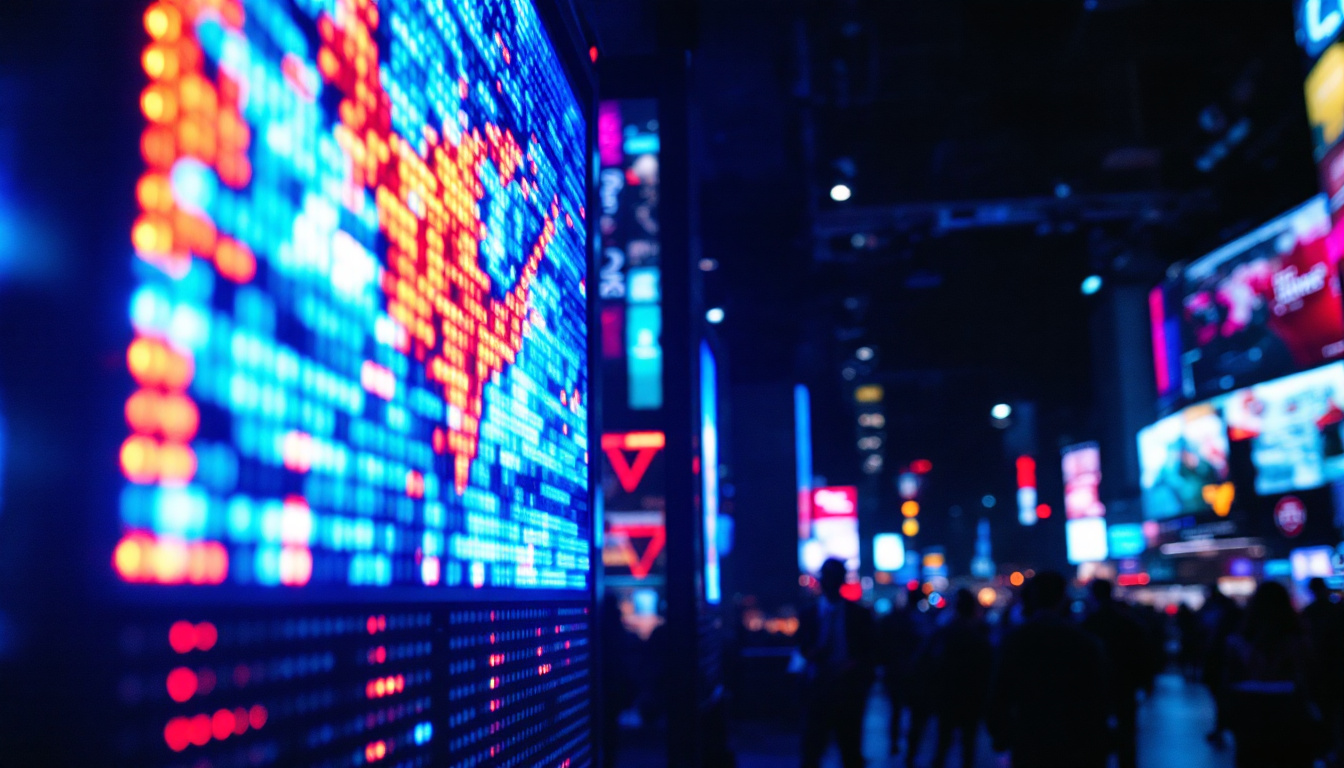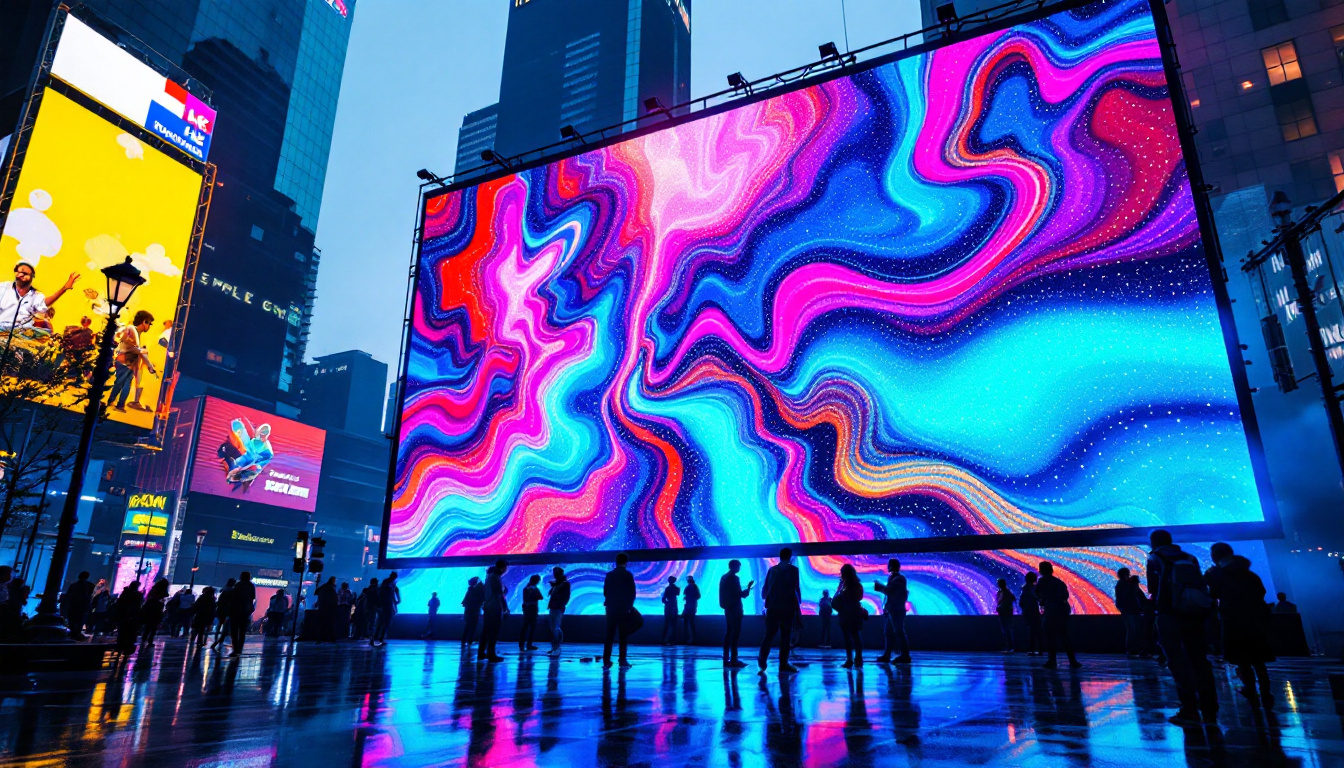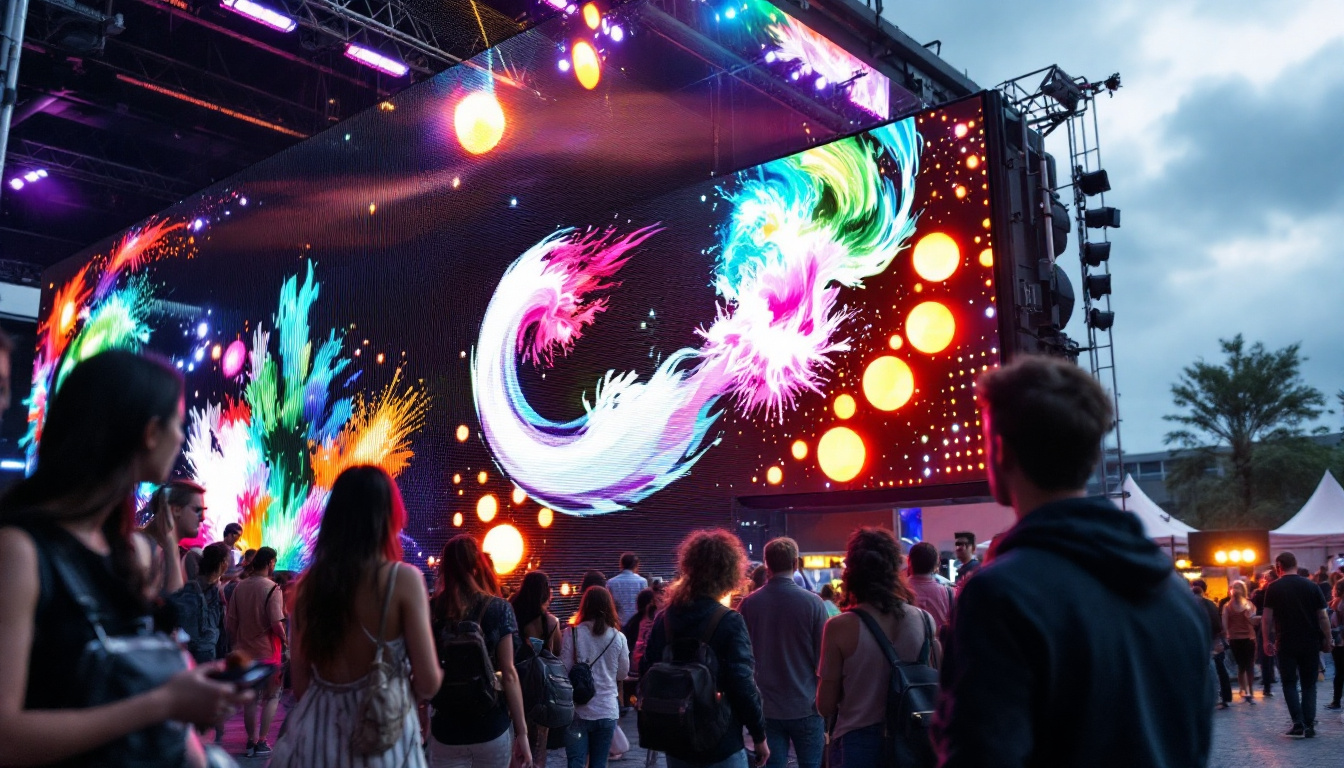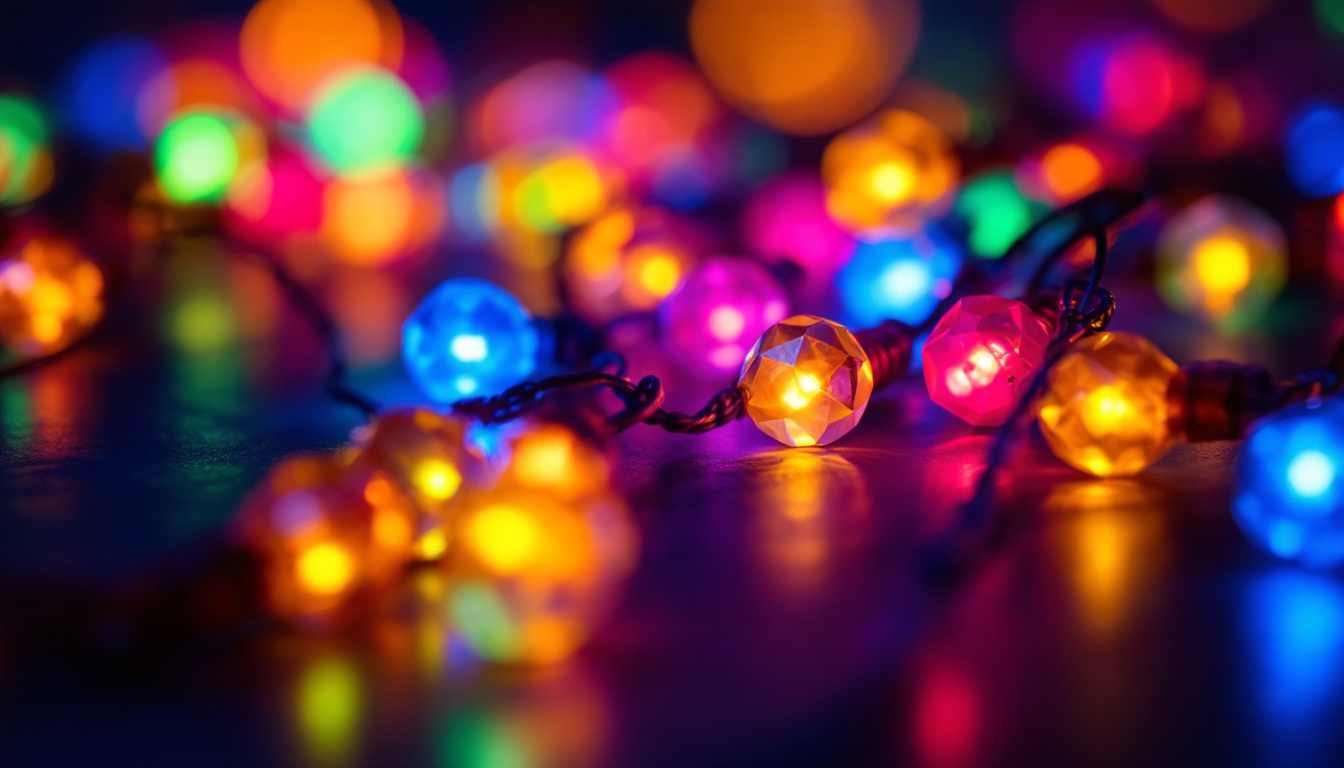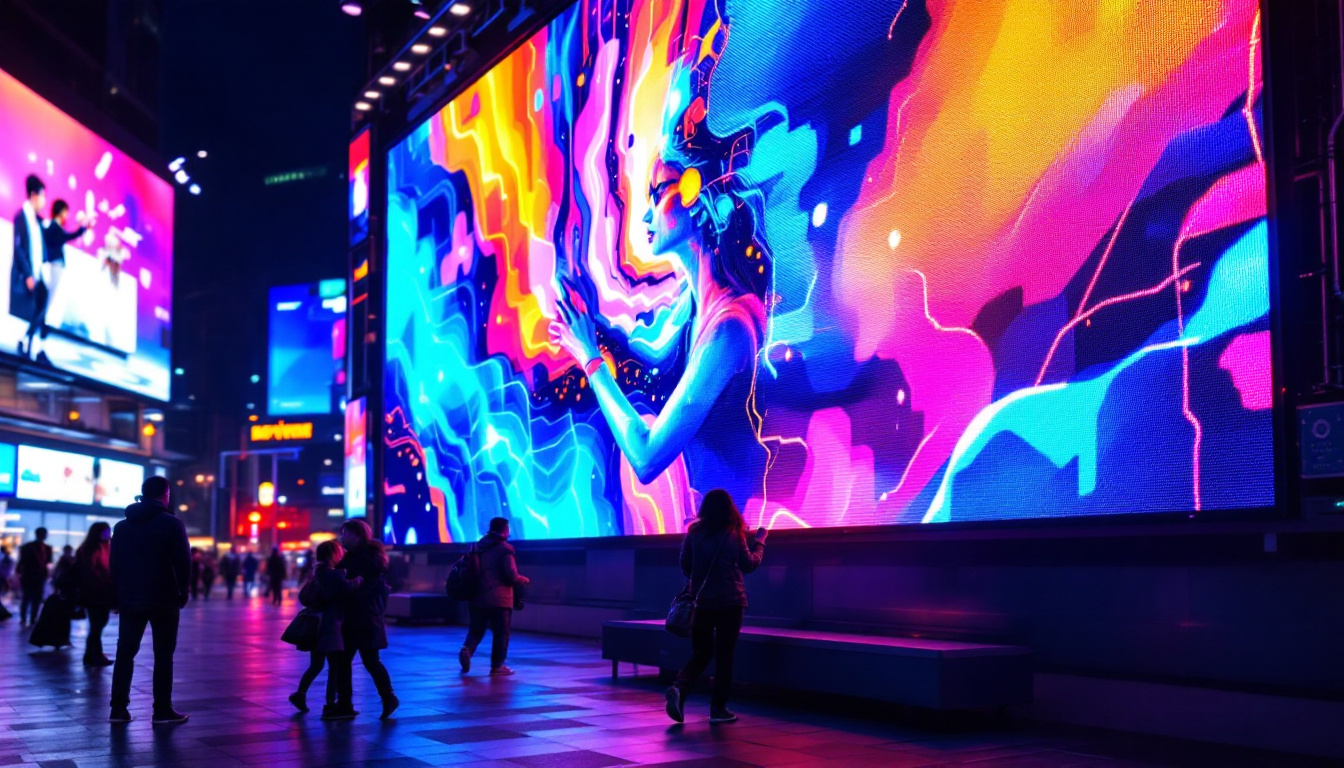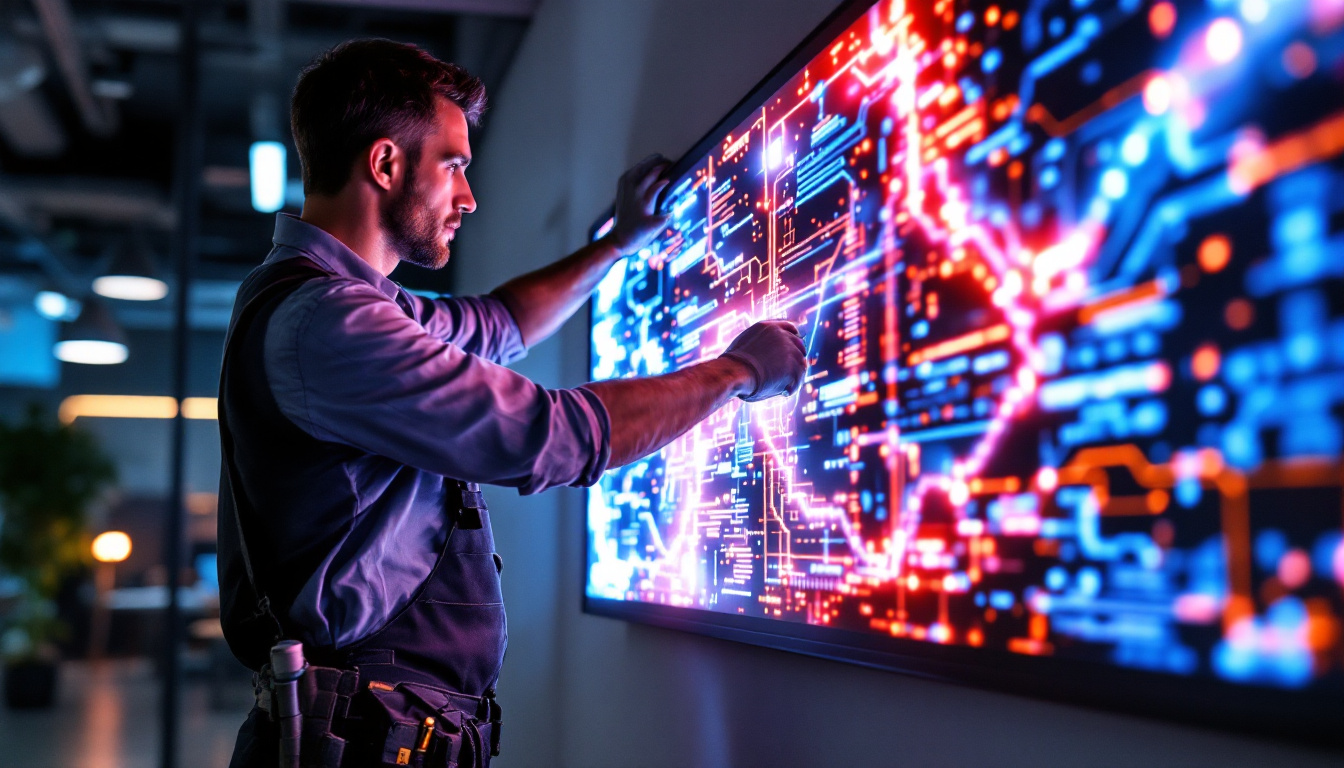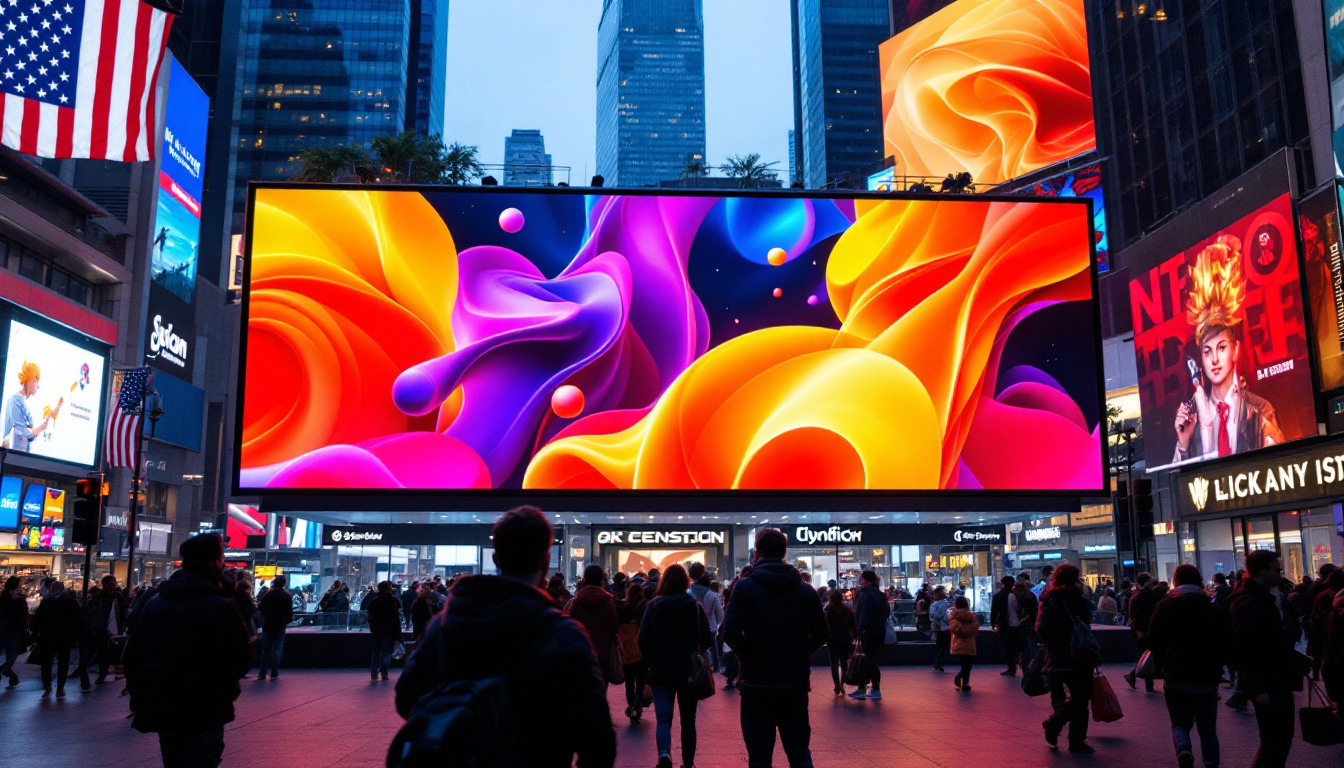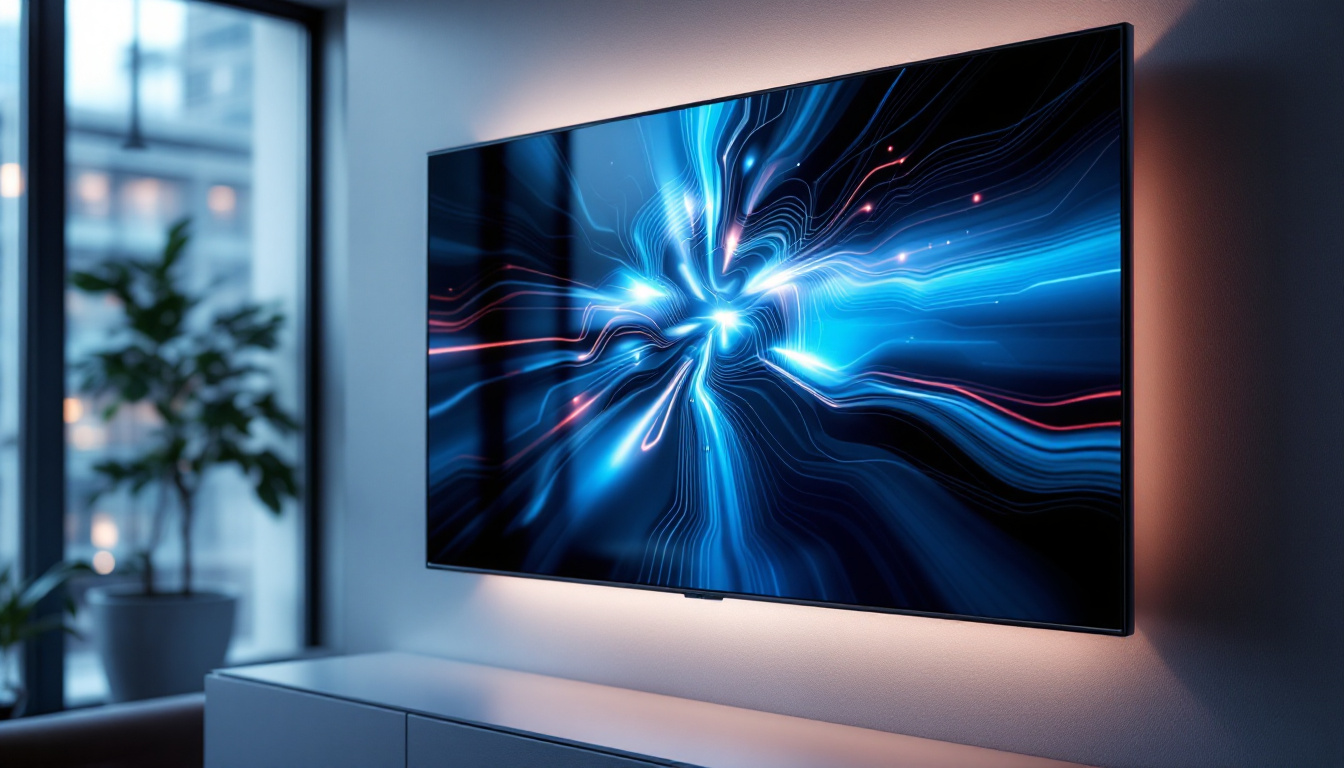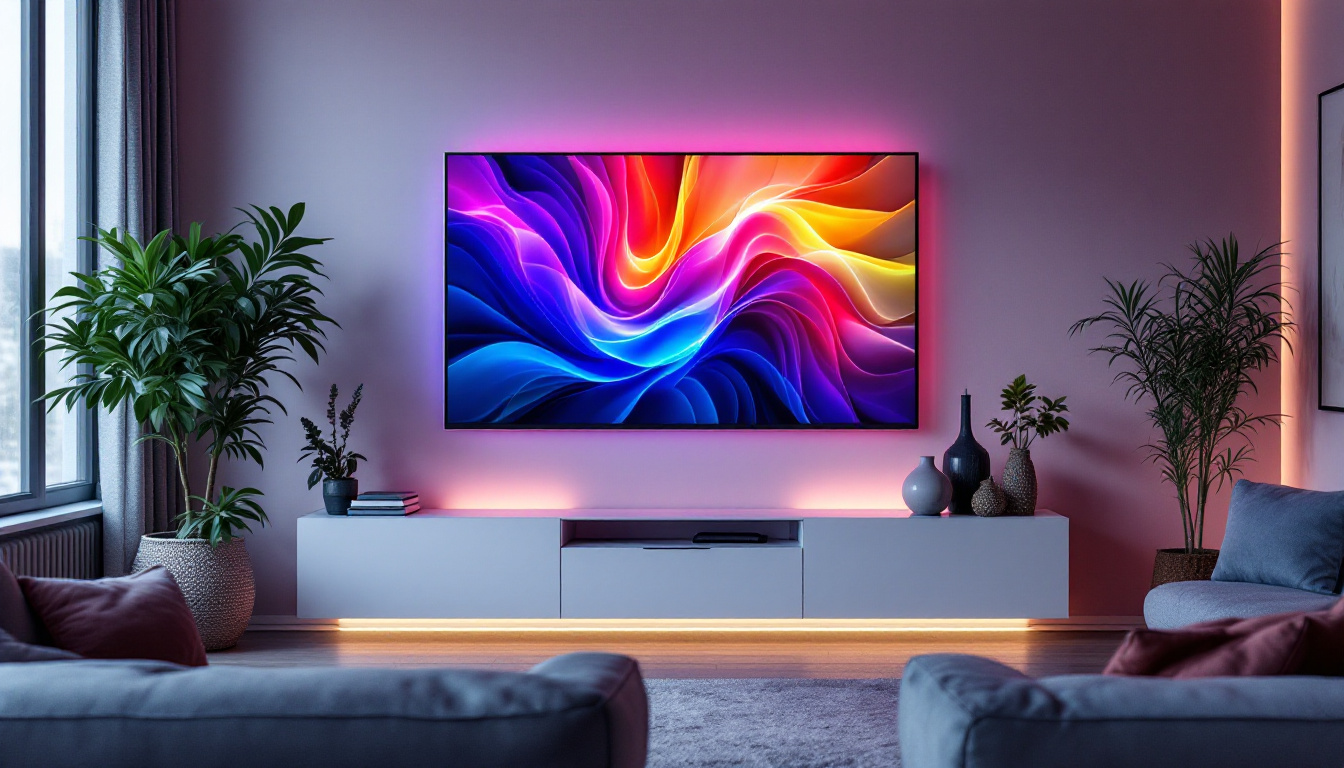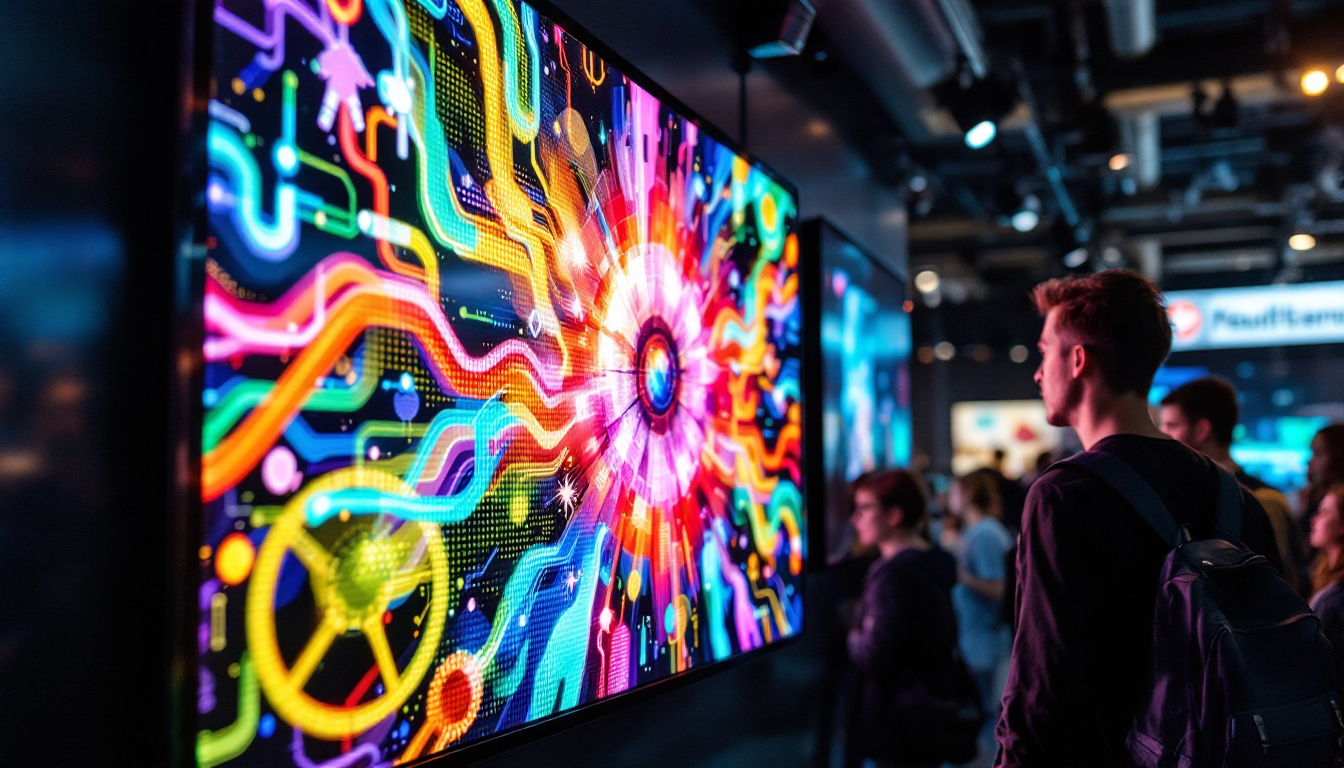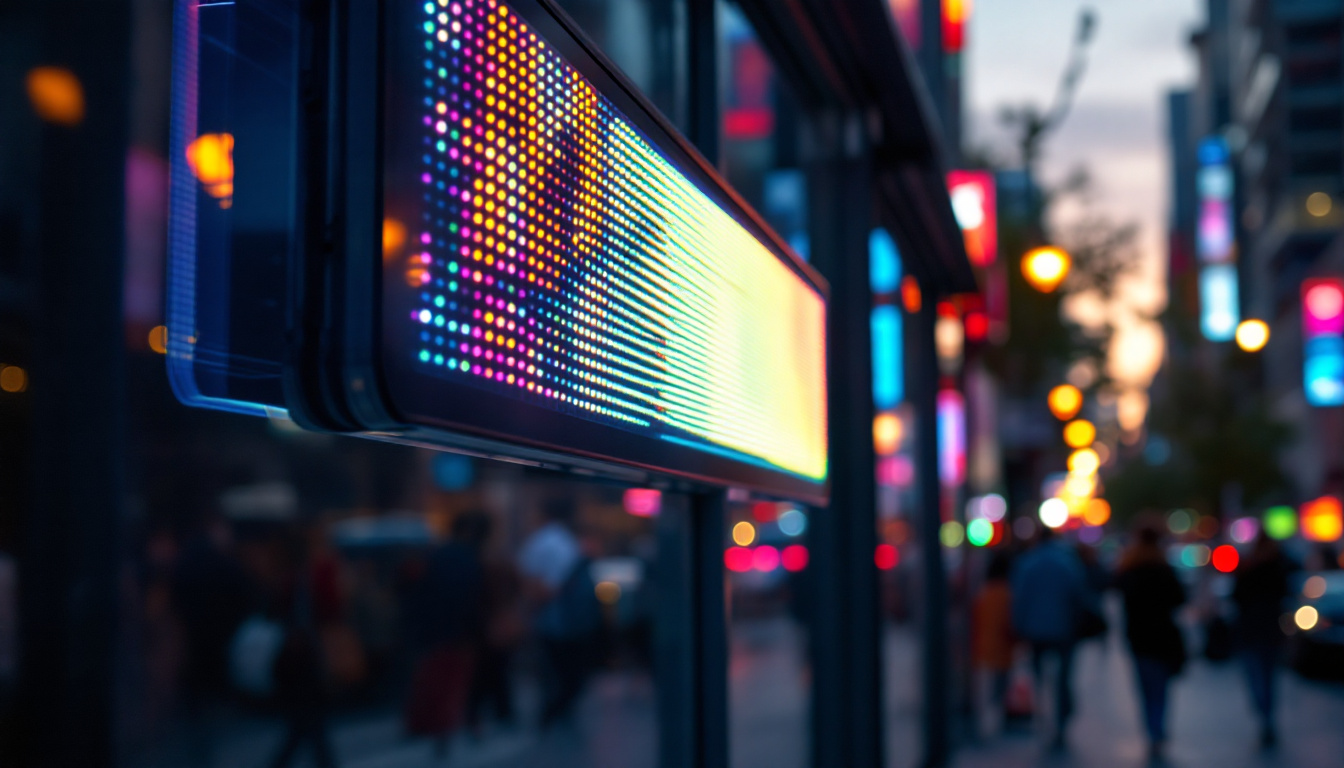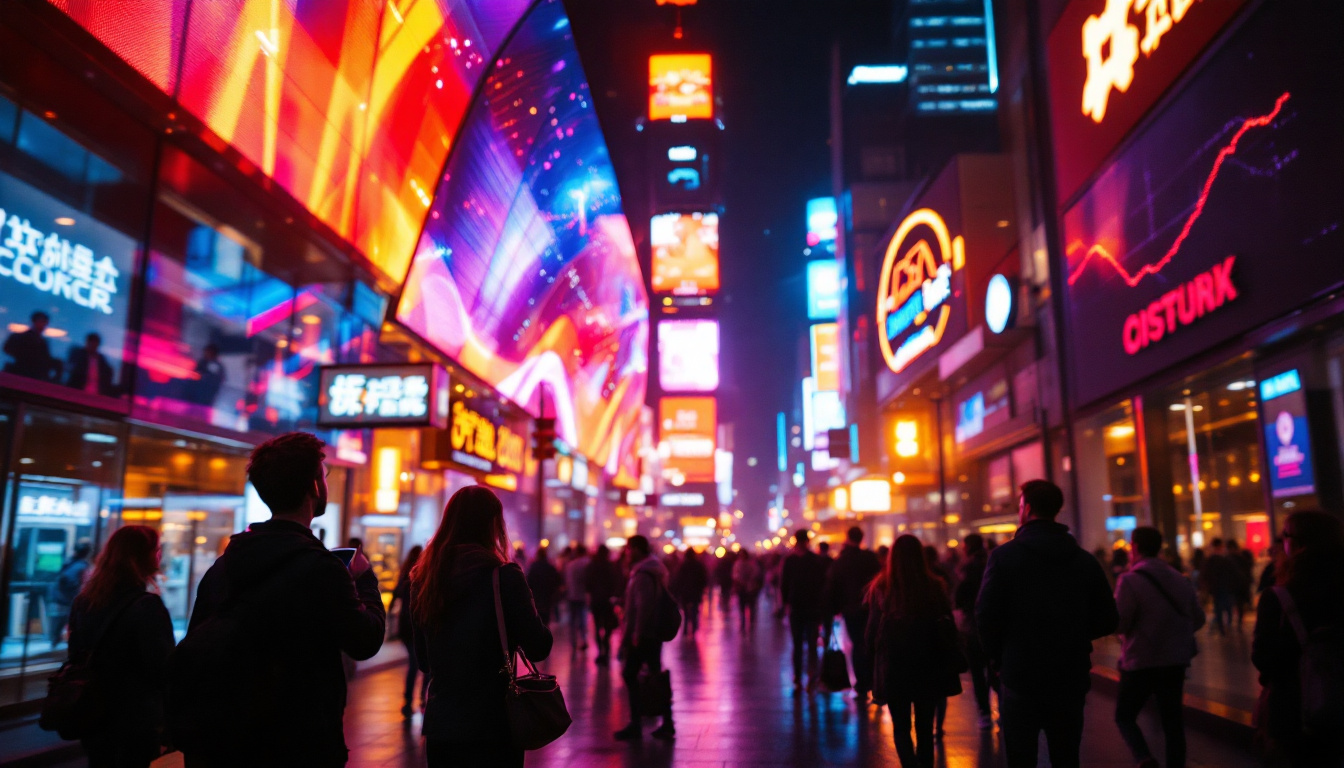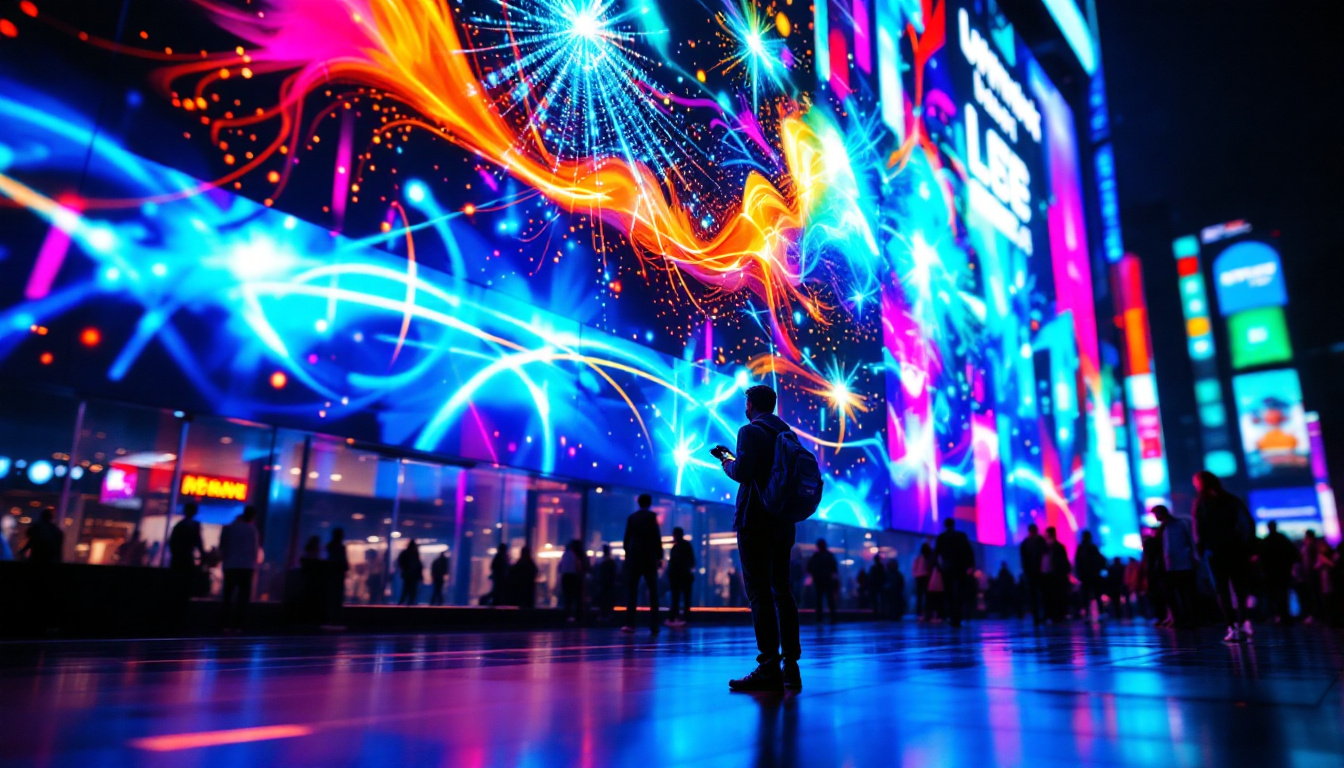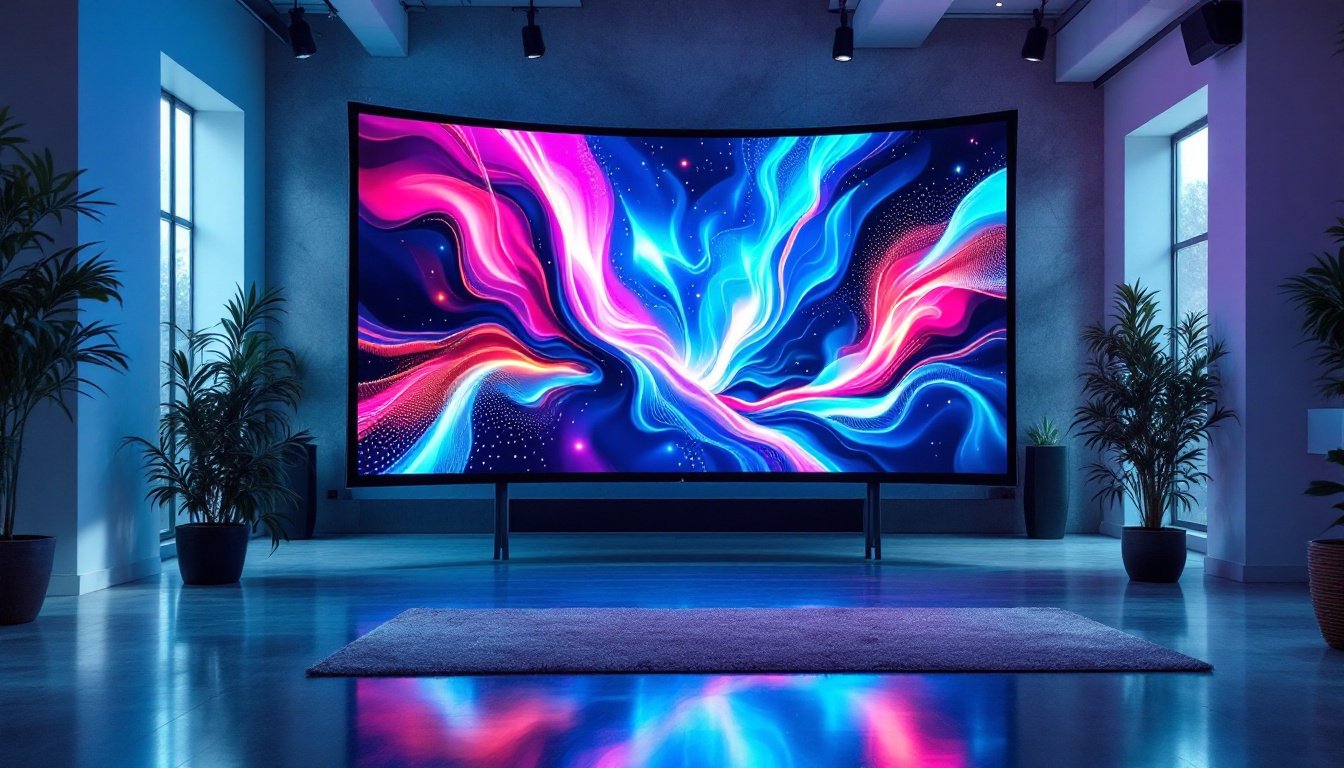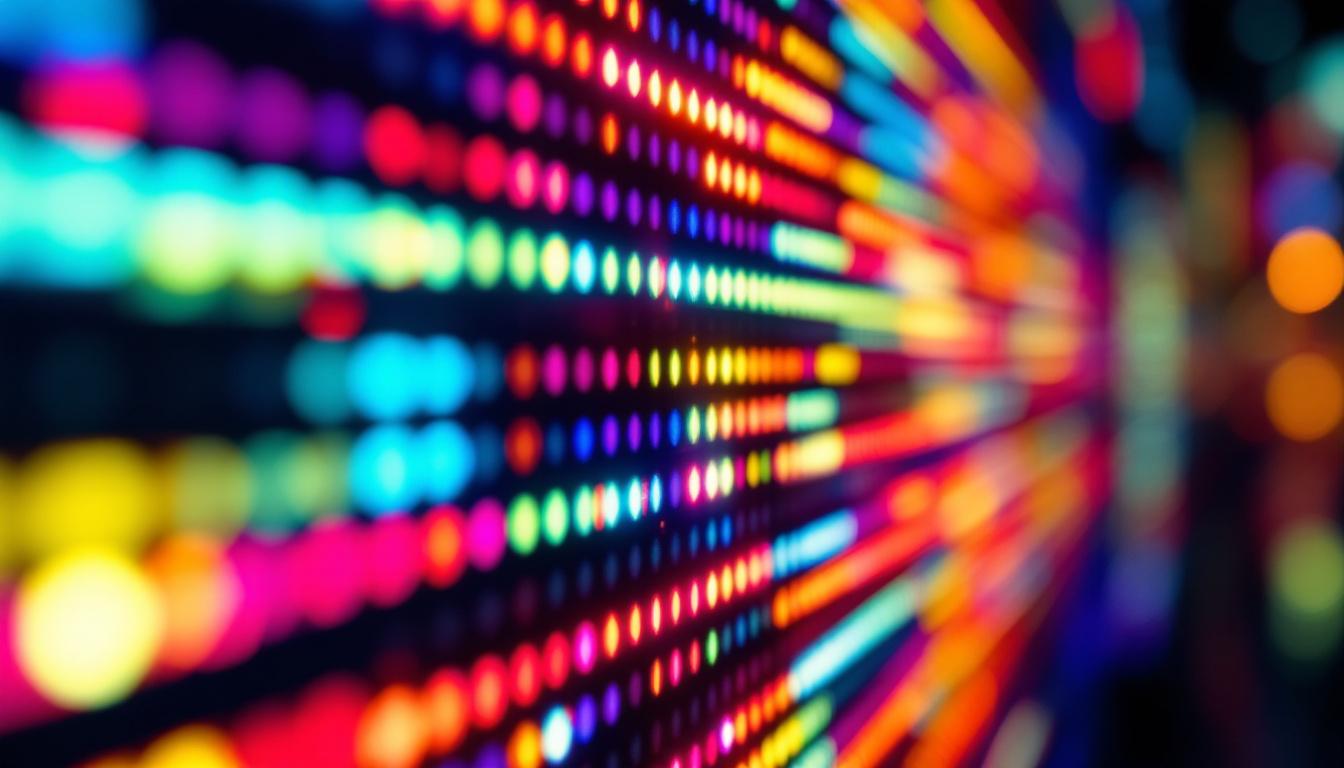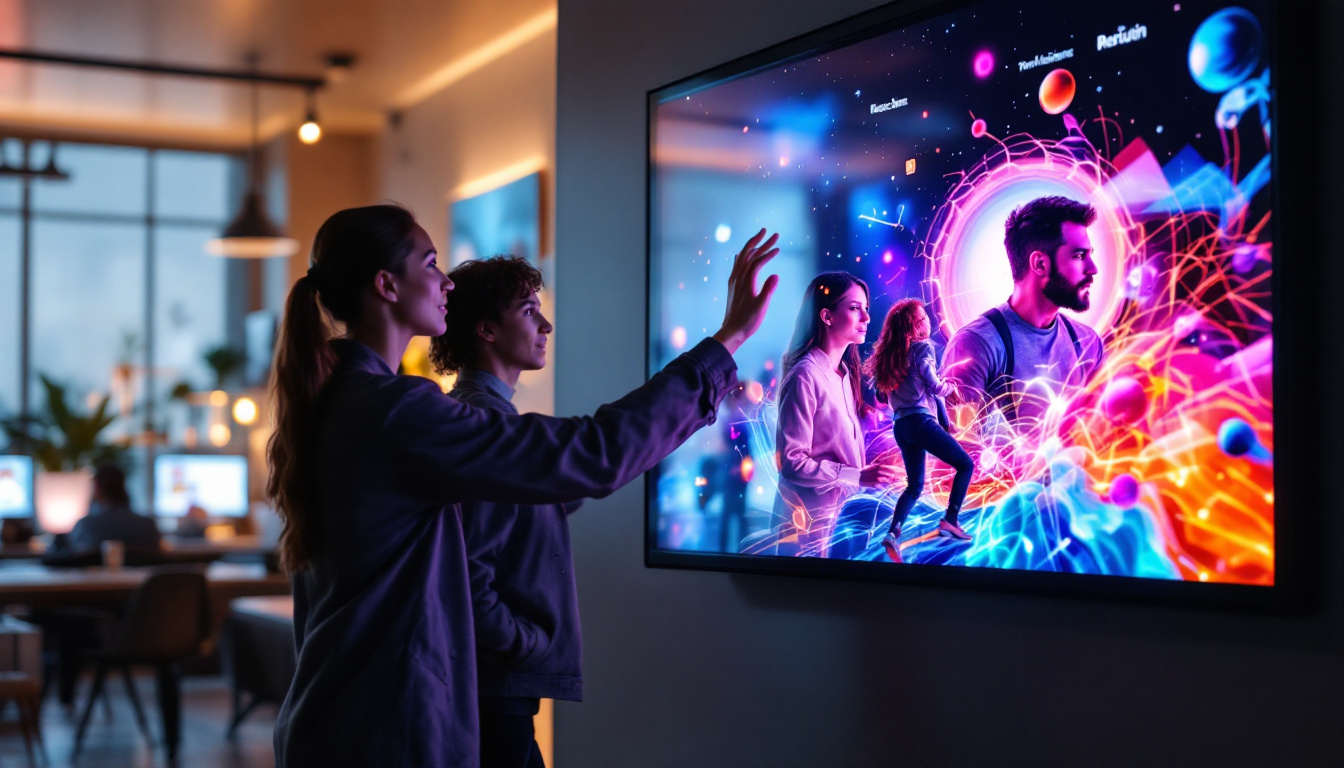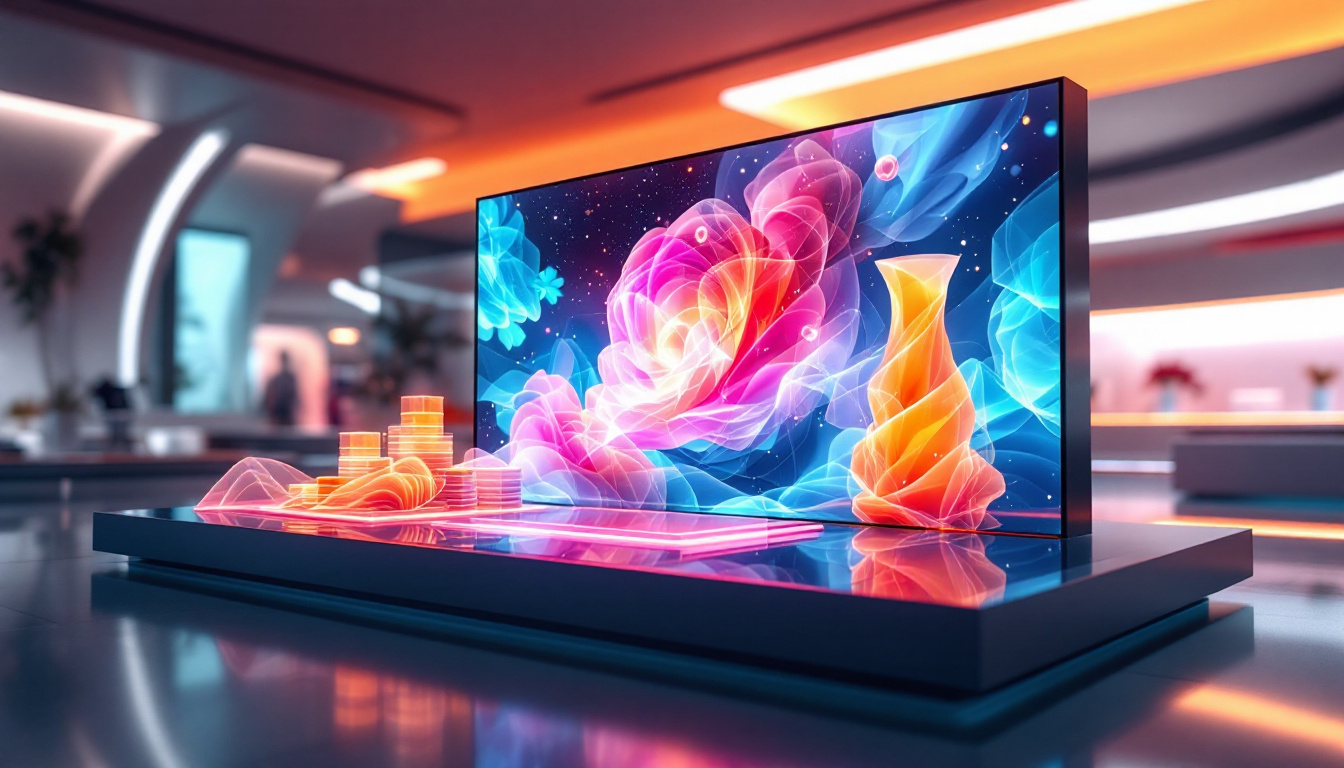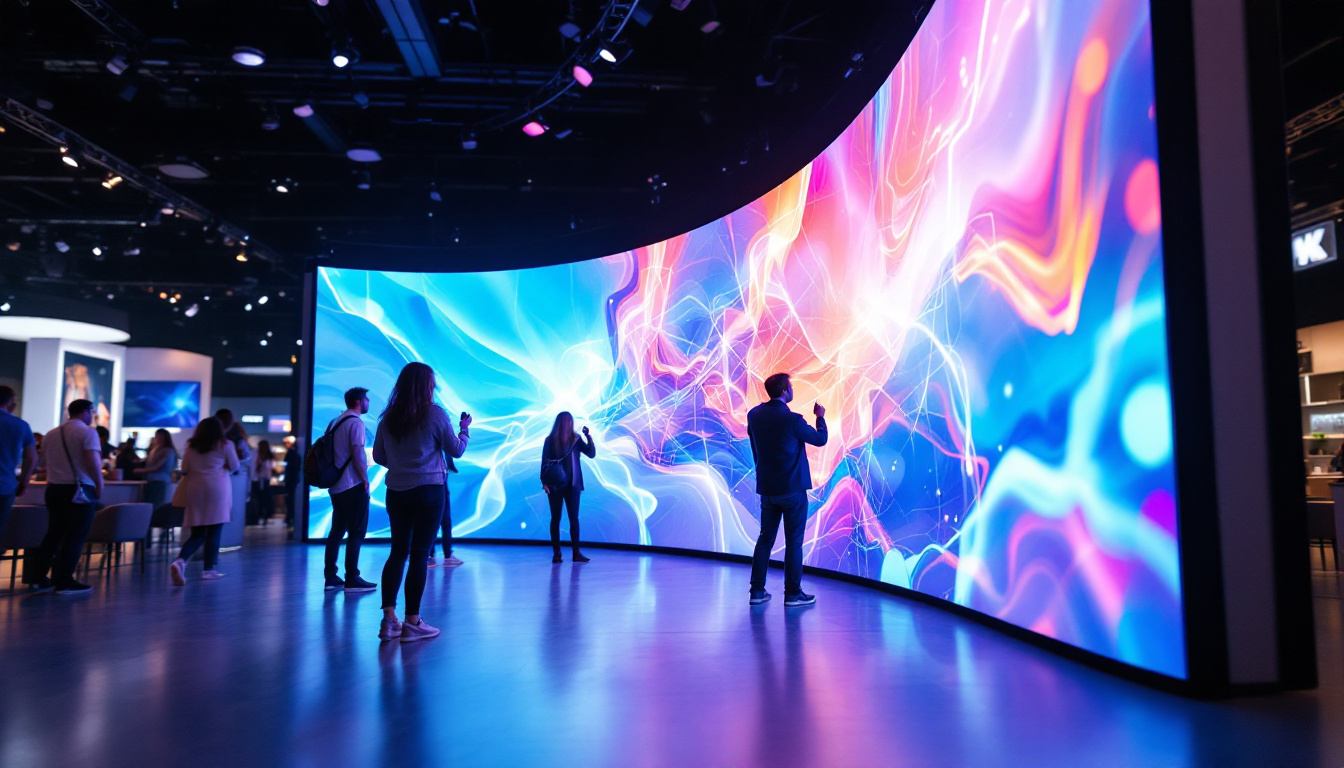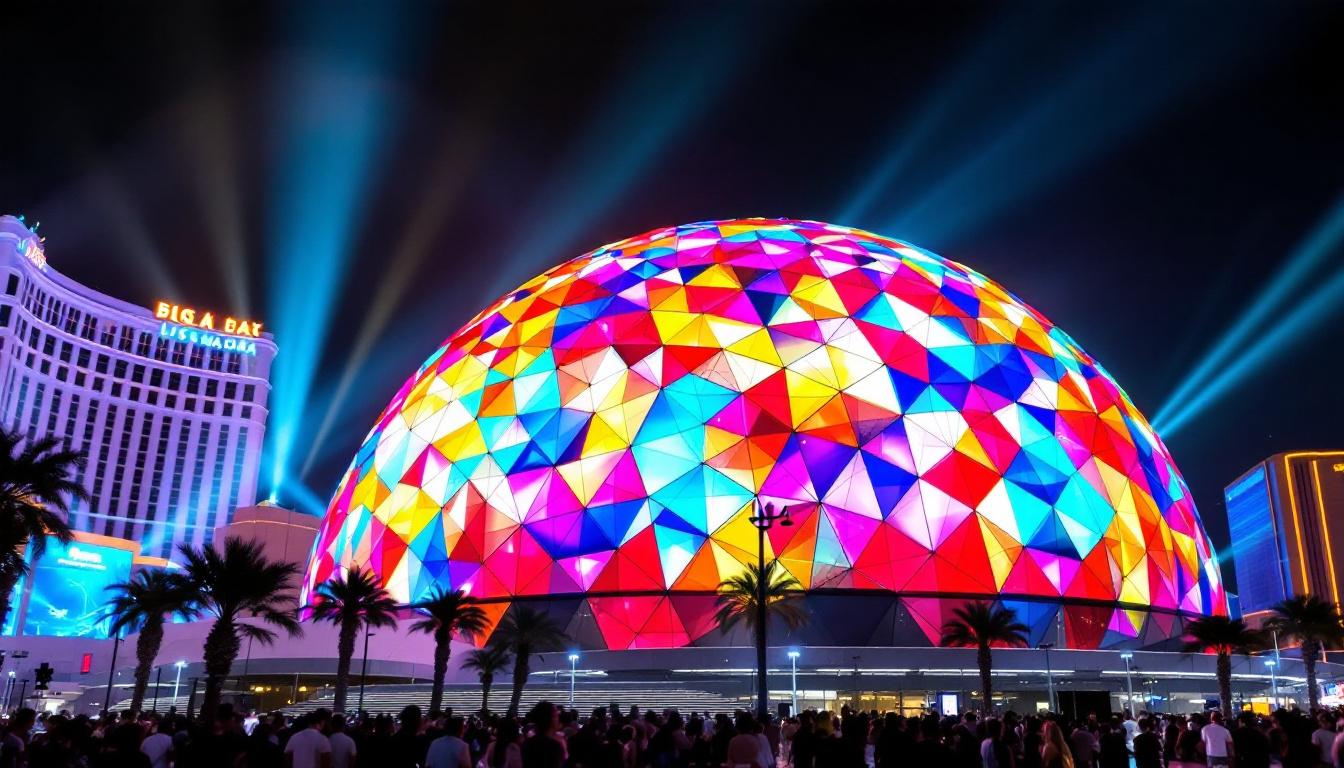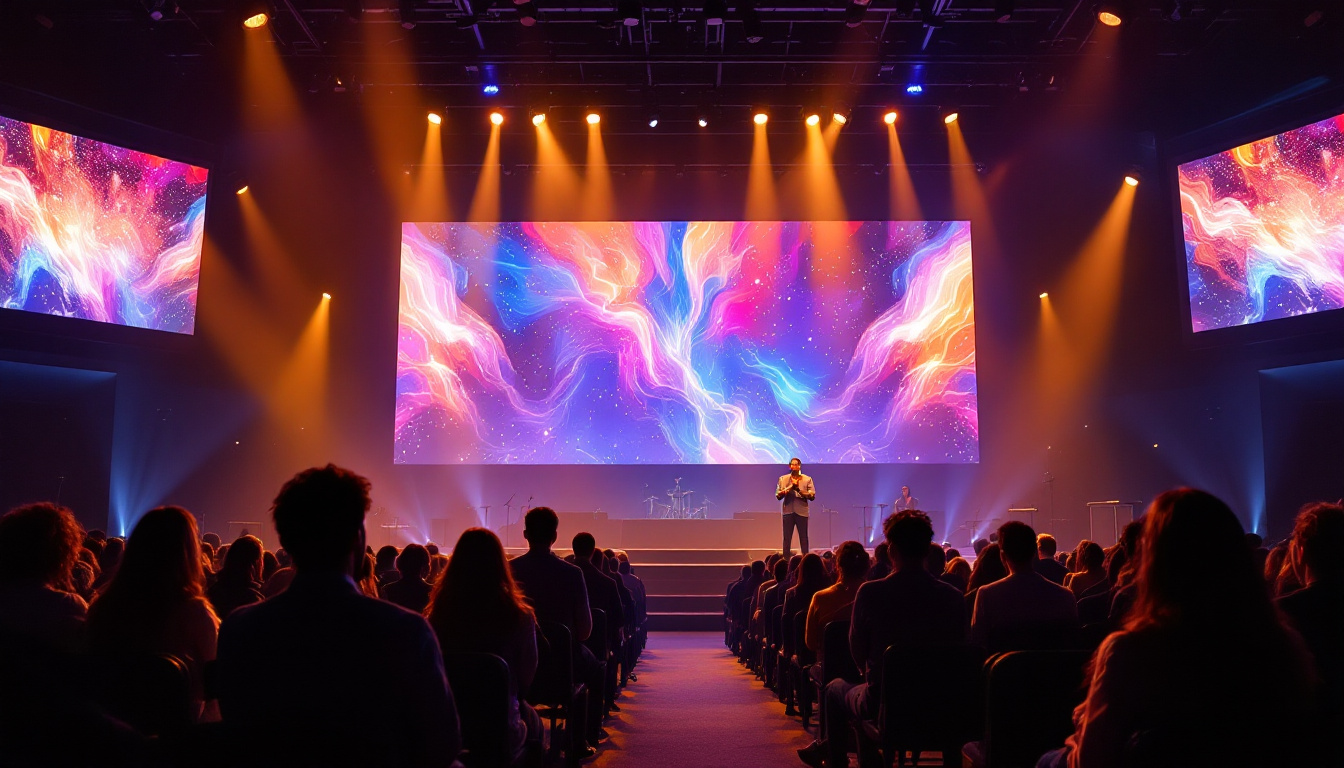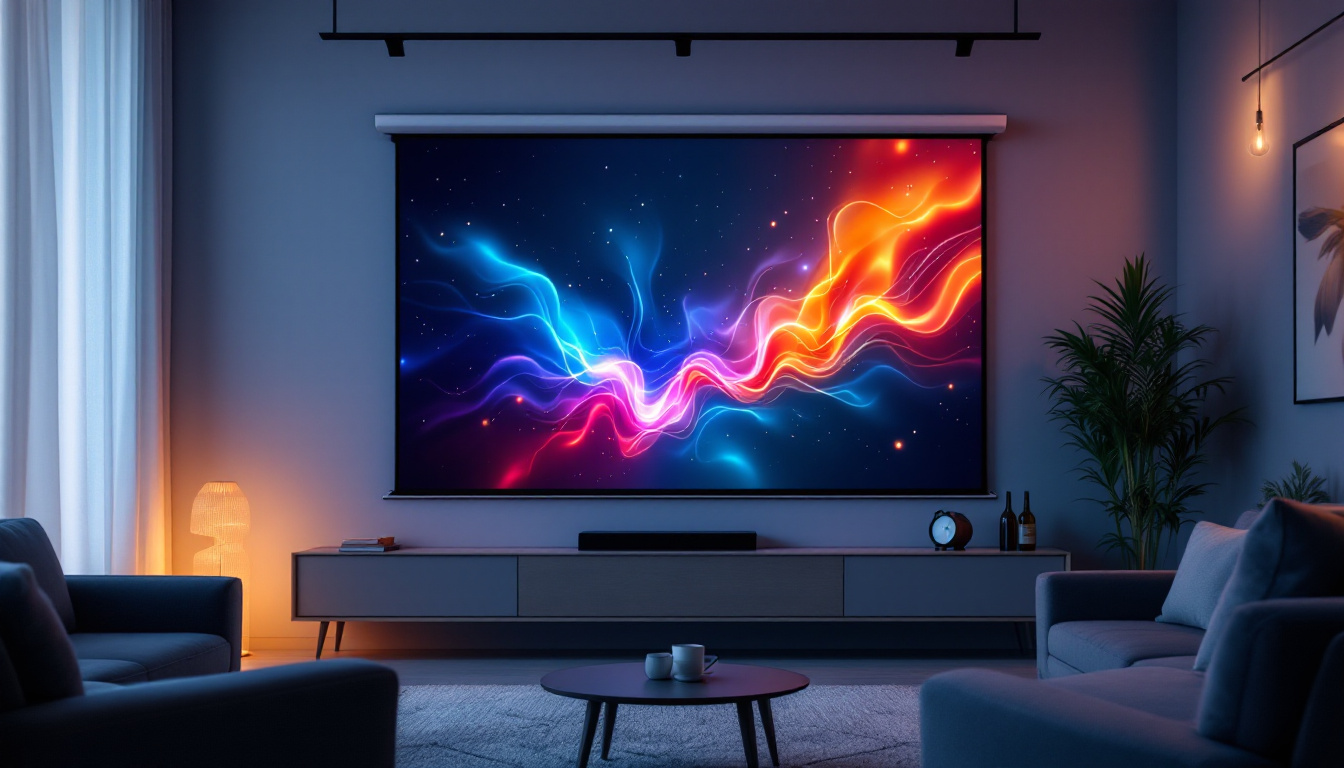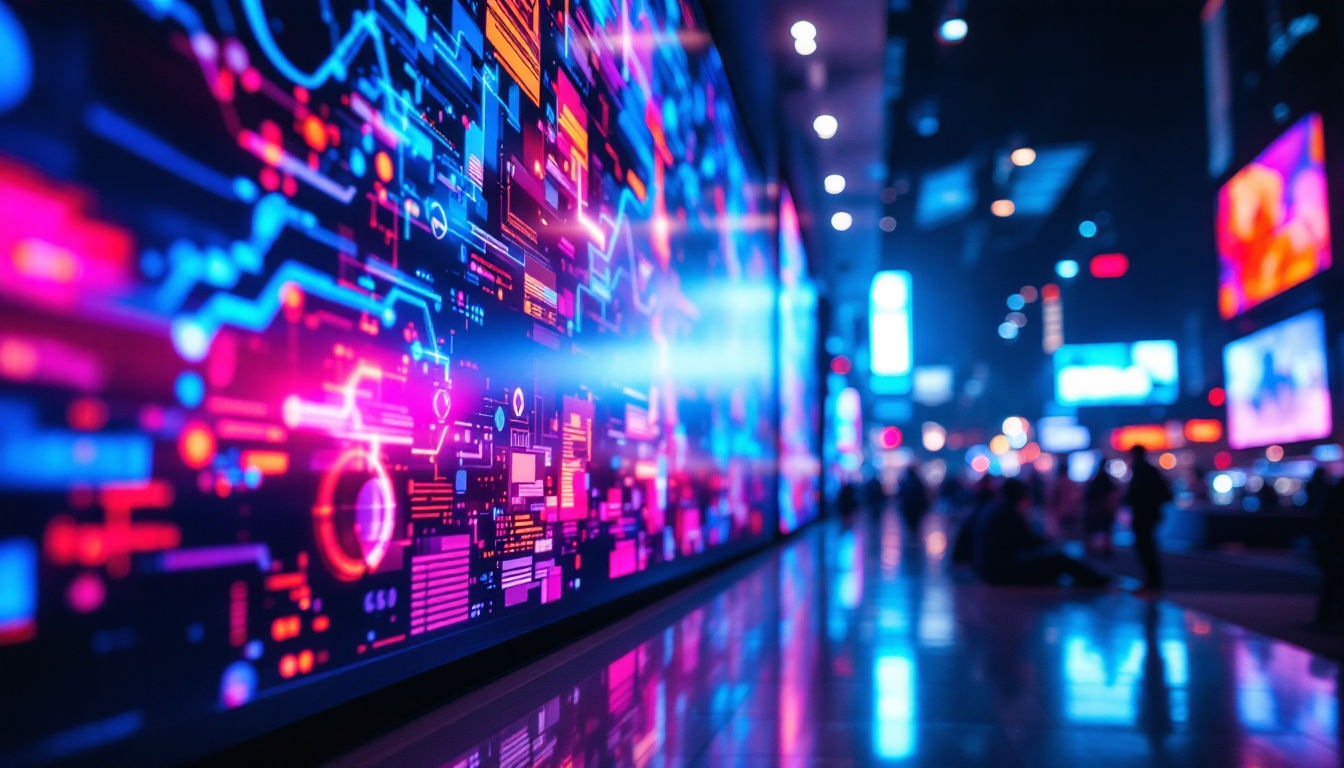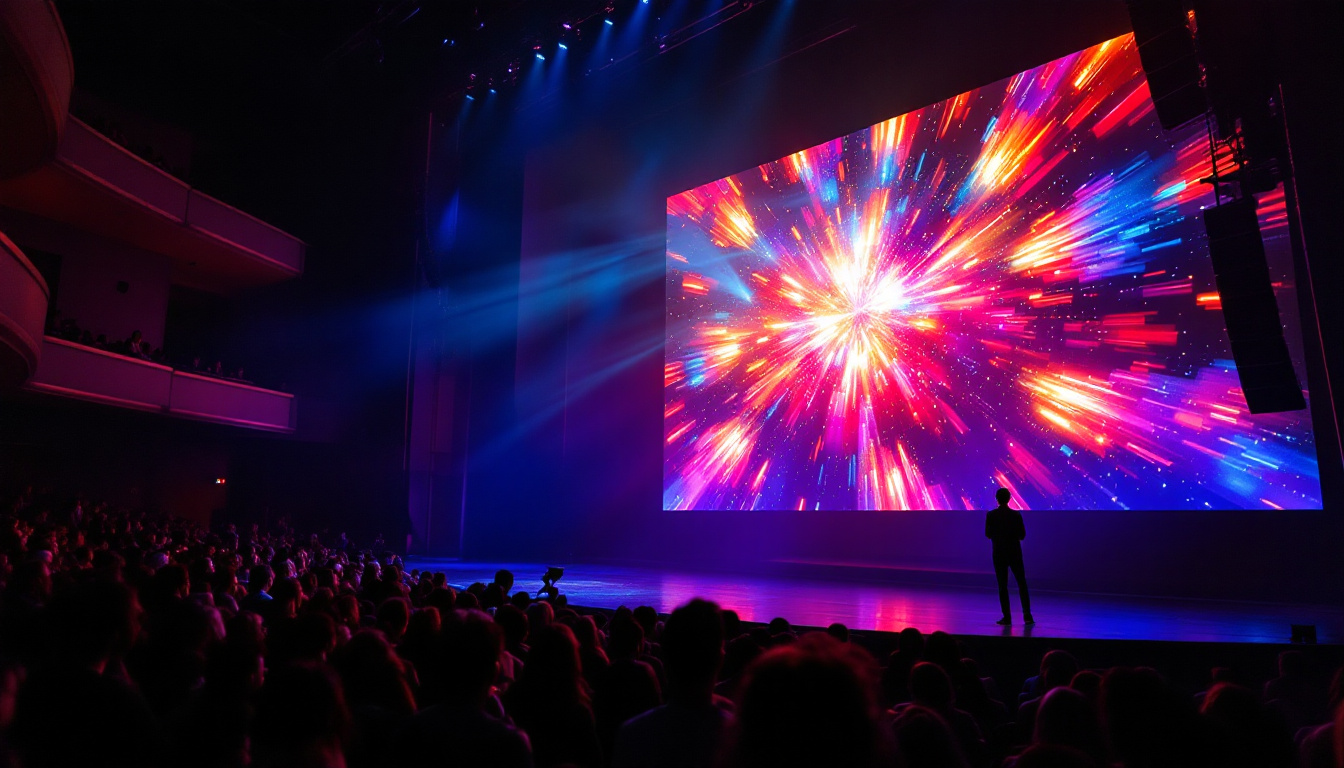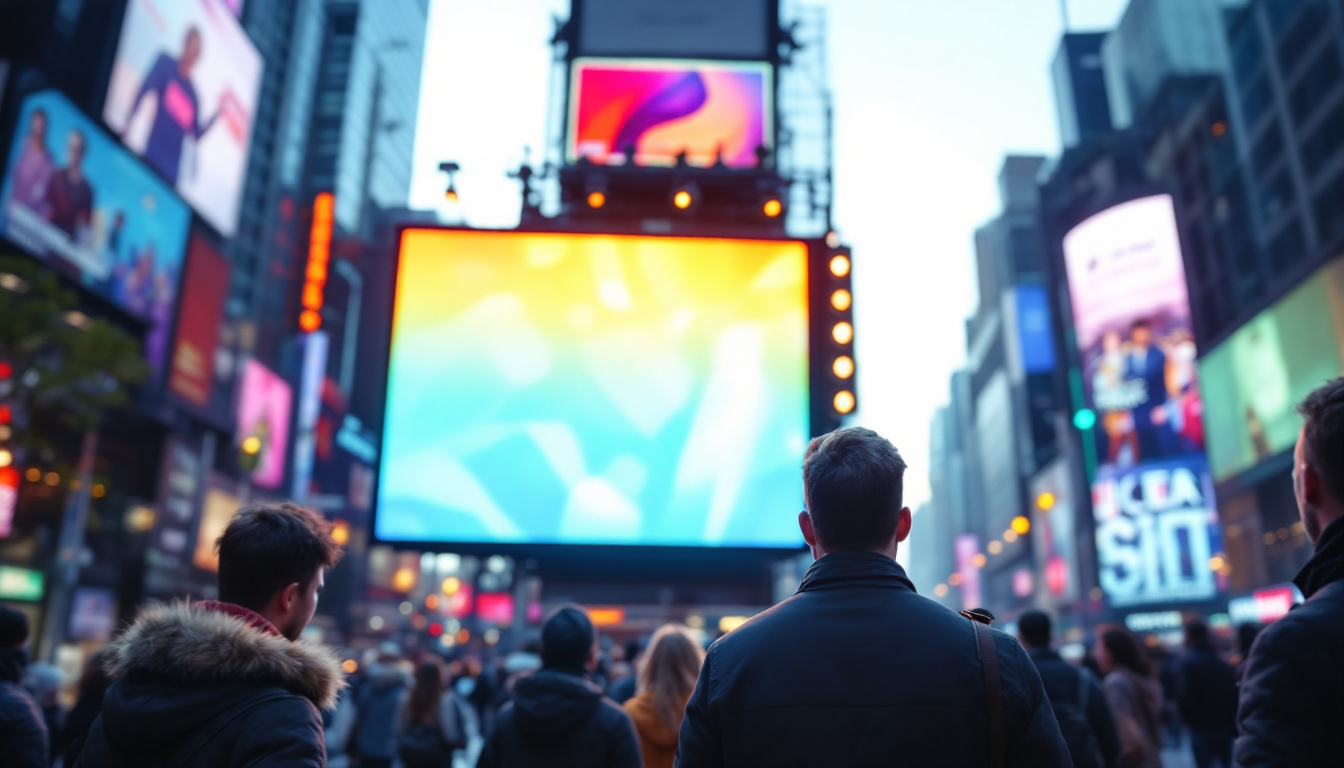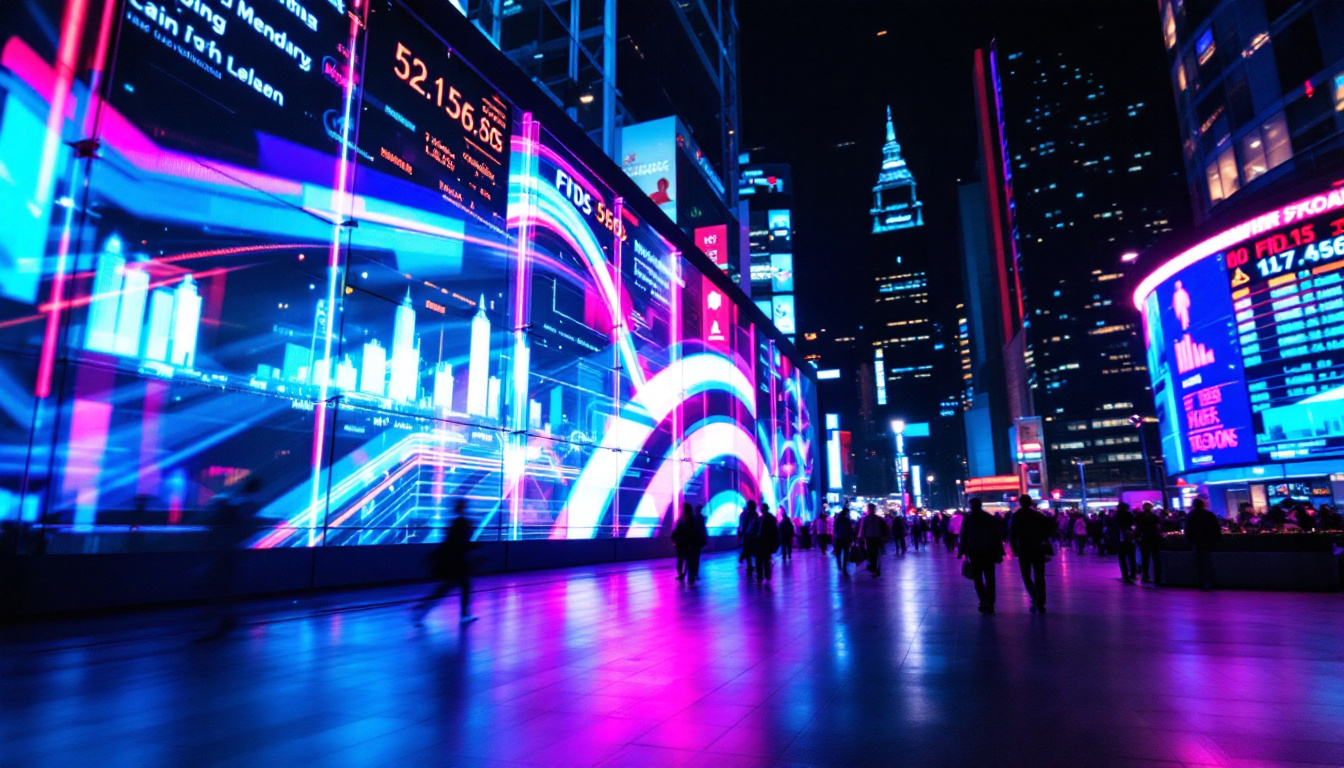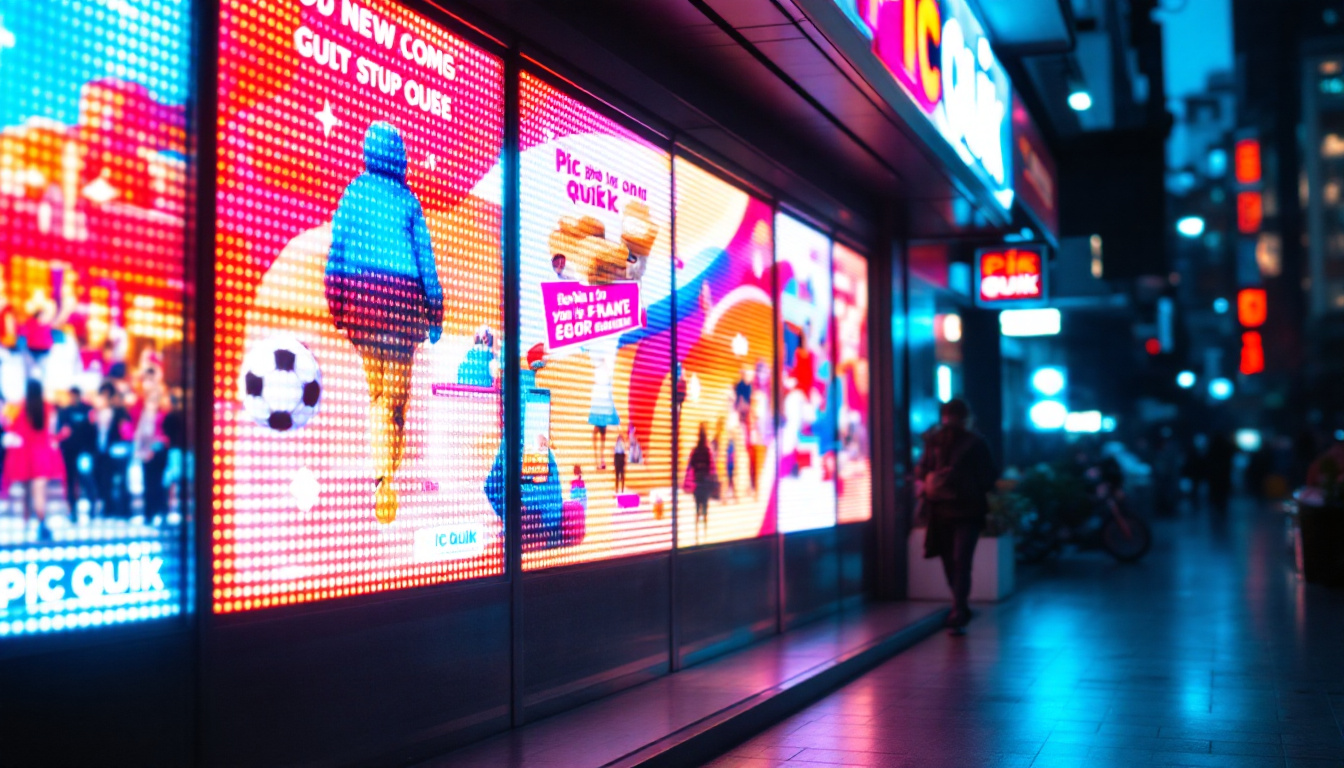In the world of modern advertising and information dissemination, LED displays have emerged as a powerful tool. Their vibrant colors, high visibility, and versatility make them a popular choice for various applications, from billboards to indoor signage. This article delves into the intricacies of LED displays, exploring their technology, applications, and advantages.
Understanding LED Technology
LED, or Light Emitting Diode, is a semiconductor device that emits light when an electric current passes through it. This technology has revolutionized the way we think about lighting and displays, offering numerous benefits over traditional incandescent and fluorescent lighting. LEDs are not only energy-efficient but also have a significantly longer lifespan, making them a cost-effective choice for both consumers and businesses alike. With their ability to produce vibrant colors and their compact size, LEDs have found applications in a wide range of industries, from automotive to architecture.
How LEDs Work
The fundamental principle behind LEDs lies in electroluminescence, where certain materials emit light when an electric current is applied. In an LED, electrons recombine with holes in the semiconductor material, releasing energy in the form of photons. The color of the emitted light depends on the materials used in the semiconductor. This process is highly efficient, as it converts a greater percentage of electrical energy into visible light compared to traditional lighting technologies, which often waste energy as heat.
LEDs are typically made from compounds such as gallium arsenide or gallium phosphide, which can be engineered to emit light in various colors. By combining red, green, and blue LEDs, it is possible to create a full spectrum of colors, which is essential for displays. Moreover, advancements in LED technology have led to the development of white LEDs, which are created by combining blue LEDs with a phosphor coating that converts some of the blue light into yellow, resulting in a warm white light that closely resembles traditional incandescent bulbs.
Types of LED Displays
LED displays come in various types, each suited for specific applications. The most common types include:
- Direct View LED Displays: These displays consist of individual LED modules that can be arranged in any configuration. They are often used for outdoor billboards and large-scale advertising, providing high visibility even in bright sunlight. Their modular design allows for easy maintenance and scalability, making them a popular choice for businesses looking to make a bold statement.
- LED Video Walls: Comprising multiple LED panels, video walls are used for events, concerts, and broadcasting. They provide high-resolution images and can display dynamic content, allowing for an immersive viewing experience. The flexibility of video walls enables them to be tailored to various sizes and shapes, making them ideal for creative installations in public spaces or corporate environments.
- LED Backlit Displays: Common in televisions and monitors, these displays use LEDs to illuminate an LCD screen, enhancing brightness and color accuracy. This technology not only improves the overall viewing experience but also contributes to thinner and lighter designs, as LED backlighting requires less space than traditional fluorescent tubes.
In addition to these types, there are also specialized LED displays such as transparent LED screens, which allow for visibility through the display itself while still showcasing vibrant images. This innovative technology is gaining traction in retail environments, where it can be used to create eye-catching advertisements without obstructing the view of products behind the display. Furthermore, advancements in flexible LED technology are paving the way for curved and adaptable displays, which can conform to various surfaces and shapes, opening up new possibilities for creative design in both commercial and residential settings.
Applications of LED Displays
LED displays have found their way into numerous sectors, transforming the way information is presented and consumed. Their adaptability makes them suitable for various environments.
Advertising and Marketing
One of the most prominent applications of LED displays is in advertising. Businesses utilize these displays to capture attention and convey messages effectively. Their brightness and visibility, even in direct sunlight, make them ideal for outdoor advertising.
Companies can easily update content remotely, allowing for dynamic advertising campaigns that can change based on time, location, or audience. This flexibility enhances engagement and can lead to higher conversion rates.
Information Displays
LED displays are also widely used for information dissemination. public transportation systems, airports, and stadiums use them to provide real-time updates, such as arrival and departure times, scores, and safety information.
The clarity and visibility of LED displays ensure that crucial information is easily accessible, improving the overall experience for users. This application is particularly important in high-traffic areas where quick communication is essential.
Entertainment and Events
In the entertainment industry, LED displays play a vital role in enhancing visual experiences. Concerts, festivals, and sporting events utilize large LED screens to display live feeds, graphics, and advertisements, creating an immersive atmosphere for attendees.
These displays can be programmed to synchronize with music and performances, adding another layer of excitement and engagement. The versatility of LED technology allows for creative visual storytelling that captivates audiences.
Advantages of LED Displays
The growing popularity of LED displays can be attributed to their numerous advantages over traditional display technologies. Understanding these benefits can help businesses and organizations make informed decisions.
Energy Efficiency
One of the most significant advantages of LED displays is their energy efficiency. Compared to traditional lighting methods, LEDs consume significantly less power, which translates to lower operating costs. This efficiency is particularly beneficial for large-scale displays that operate continuously.
Moreover, LED technology generates less heat, reducing the need for additional cooling systems. This characteristic not only saves energy but also prolongs the lifespan of the display, making it a cost-effective solution in the long run.
Durability and Longevity
LED displays are known for their durability. Unlike traditional displays that may be fragile or susceptible to damage, LEDs are solid-state devices that can withstand harsh conditions. They are resistant to shock, vibrations, and temperature fluctuations, making them ideal for outdoor use.
Additionally, LED displays have a long operational lifespan, often exceeding 50,000 hours. This longevity reduces the frequency of replacements and maintenance, further enhancing their cost-effectiveness.
High-Quality Visuals
LED displays are renowned for their exceptional visual quality. They offer high brightness levels, vibrant colors, and excellent contrast ratios, ensuring that content is displayed clearly and attractively. This quality is crucial for applications where visibility is paramount, such as advertising and information displays.
Furthermore, advancements in LED technology have led to the development of high-resolution displays, allowing for detailed images and videos. This capability is particularly valuable in the entertainment industry, where visual impact is essential.
Challenges and Considerations
While LED displays offer numerous advantages, there are also challenges and considerations to keep in mind. Understanding these factors can help organizations make informed decisions when investing in LED technology.
Initial Investment Costs
One of the primary challenges associated with LED displays is the initial investment cost. Although prices have decreased in recent years, high-quality LED displays can still be expensive. Organizations must weigh the upfront costs against the long-term savings associated with energy efficiency and durability.
It is essential to consider the return on investment (ROI) when evaluating LED displays. In many cases, the long-term benefits outweigh the initial costs, making them a worthwhile investment for businesses looking to enhance their advertising or information dissemination strategies.
Technical Expertise
Implementing and maintaining LED displays may require technical expertise, especially for larger installations. Organizations may need to invest in training personnel or hiring specialists to ensure that the displays are set up and maintained correctly.
Additionally, as technology continues to evolve, staying updated with the latest advancements can be a challenge. Organizations must be prepared to adapt and invest in ongoing training to maximize the benefits of their LED displays.
Content Management
Content management is another critical consideration when using LED displays. Creating engaging and relevant content is essential for capturing the audience’s attention. Organizations must develop a strategy for content creation, scheduling, and updating to ensure that their displays remain effective.
Moreover, the ability to change content quickly is a significant advantage of LED displays. However, this requires a robust content management system that allows for easy updates and scheduling. Investing in the right tools and resources is crucial for maximizing the impact of LED displays.
The Future of LED Displays
The future of LED displays looks promising, with ongoing advancements in technology and applications. As industries continue to evolve, LED displays are likely to play an increasingly significant role in communication and marketing strategies.
Innovations in LED Technology
Innovations in LED technology are paving the way for even more advanced displays. Developments such as microLED and flexible LED screens are emerging, offering new possibilities for design and functionality.
MicroLED technology, for instance, promises to deliver even higher resolutions and improved energy efficiency. This advancement could lead to the creation of ultra-thin displays that can be seamlessly integrated into various environments.
Integration with Smart Technology
As smart technology continues to gain traction, the integration of LED displays with IoT (Internet of Things) devices is becoming more common. This integration allows for real-time data sharing and dynamic content updates based on audience behavior and preferences.
Organizations can leverage this technology to create personalized experiences for their audiences, enhancing engagement and effectiveness. The ability to analyze data and adjust content accordingly will be a game-changer for marketing and communication strategies.
Sustainability and Environmental Impact
With growing concerns about environmental sustainability, the LED industry is also focusing on reducing its environmental impact. Efforts are being made to develop more sustainable manufacturing processes and materials, as well as recycling programs for old displays.
As consumers become more environmentally conscious, businesses that prioritize sustainability in their LED display solutions may gain a competitive edge. This shift towards eco-friendly practices is likely to shape the future of the LED industry.
Conclusion
LED displays have transformed the landscape of advertising, information dissemination, and entertainment. Their energy efficiency, durability, and high-quality visuals make them an attractive option for various applications. While challenges exist, the benefits often outweigh the drawbacks, making LED technology a worthwhile investment.
As innovations continue to emerge and the integration of smart technology becomes more prevalent, the future of LED displays looks bright. Organizations that embrace this technology will be well-positioned to enhance their communication strategies and engage their audiences effectively.
In a world where visual communication is paramount, understanding and leveraging LED display technology is essential for staying ahead in the competitive landscape.
Discover the Future of Visual Communication with LumenMatrix
Ready to elevate your visual messaging and captivate your audience like never before? Explore LumenMatrix’s innovative LED display solutions, where cutting-edge technology meets creative design. From vibrant Indoor and Outdoor LED Wall Displays to dynamic Vehicle and Sports LED Displays, and even customizable options like Floor and All-in-One LED Displays, LumenMatrix is at the forefront of revolutionizing visual communication. Experience the power of LED Transparent Displays and more. Check out LumenMatrix LED Display Solutions today and transform your brand’s visibility with unparalleled clarity and impact.

